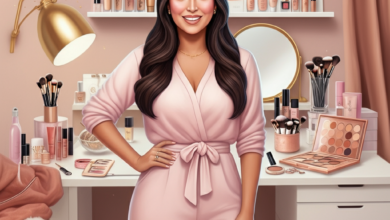**”[img]https://lookpic.com/cdn/i2/s/05282024182719-001.jpg[/img] Choosing the Right Palette for Your Space”**
![[img]https://lookpic.com/cdn/i2/s/05282024182719-001.jpg[/img]](https://techiwalls.com/wp-content/uploads/2024/07/Untitled-design-2024-07-20T020316.439-780x470.png)
Color is more than just a visual element; it’s an emotional experience. The hues we choose for our home can shape moods, inspire creativity, and even enhance relaxation. Understanding color psychology in home decor allows homeowners to create spaces that resonate with their personal style while serving functional purposes. From the calming blues of a bedroom to the energizing yellows of a kitchen, each shade conveys unique feelings and messages.
As you embark on your decorating journey, knowing how colors impact our emotions can transform any space into an inviting haven or a dynamic workspace. Let’s dive deeper into the fascinating world of color psychology and discover how to select the right palette for your space!
Understanding the Meaning of Colors
Colors hold powerful meanings that can evoke emotions and influence moods. Each hue carries its own unique symbolism, deeply rooted in cultural contexts.
Red often represents passion and energy. It’s a bold choice for spaces where you want to inspire excitement or foster creativity. Conversely, blue is calming and serene, making it ideal for bedrooms or relaxation areas.
Yellow brings cheerfulness and warmth into a room. It brightens up dull corners but can become overwhelming if overused. Green embodies nature and tranquility, promoting balance—perfect for living rooms or home offices.
Purple suggests luxury and sophistication while encouraging creativity in workspaces. Neutral colors like beige or gray offer versatility; they serve as perfect backdrops allowing other elements to shine without overpowering them.
Understanding these associations helps tailor your decor choices to resonate with the atmosphere you wish to create within your space.
Choosing a Color Palette Based on Room Function
Choosing a color palette based on the function of each room is crucial for creating an inviting atmosphere. Think about how you intend to use the space.
For relaxation, soft blues and greens can evoke calmness. These shades are perfect for bedrooms or reading nooks where tranquility is key.
In high-energy areas like kitchens or family rooms, consider warmer tones such as yellows and oranges to stimulate conversation and activity. These colors create a lively environment that encourages interaction.
For workspaces, neutral colors combined with pops of stimulating hues can enhance focus without being distracting. A touch of green may also promote creativity while maintaining productivity.
Each area in your home serves a unique purpose, so aligning your color choices with these functions will enhance both aesthetics and experience within those spaces.
Tips for Mixing and Matching Colors
Mixing and matching colors can elevate your home decor to new heights. Start by choosing a base color that resonates with you. This could be a soothing blue or a vibrant coral.
Next, consider the 60-30-10 rule. Allocate 60% of your [img]https://lookpic.com/cdn/i2/s/05282024182719-001.jpg[/img] space to the dominant color, 30% for secondary hues, and just 10% for an accent shade. This creates balance while allowing room for creativity.
Use complementary colors from opposite sides of the wheel for striking combinations. For example, pair soft yellow with deep purple for visual interest.
Don’t shy away from patterns! Stripes or florals can add texture when combined thoughtfully with solid colors.
Trust your instincts as you mix different shades. Personal touch matters most in creating a space that feels uniquely yours.
Popular Color Combinations in Home Decor
Popular color combinations can transform any space into a work of art. One classic pairing is navy blue and mustard yellow. This combination offers sophistication while adding warmth, making it perfect for living rooms or dining areas.
For a serene vibe, consider soft gray and blush pink. These colors evoke calmness and create an inviting atmosphere in bedrooms or nurseries.
If you crave vibrancy, try teal paired with coral. This lively duo energizes spaces like kitchens or creative studios, inspiring creativity and joy.
Earthy tones like olive green combined with terracotta bring the outdoors inside. They’re great choices for cozy nooks or bohemian-style rooms.
Monochromatic schemes using varying shades of one color can add depth without overwhelming the senses. Think different blues layered together to create visual interest while maintaining harmony throughout your home décor.
Incorporating Colors into Different Design Styles
Incorporating colors into various design styles can transform a space. Each style has its own characteristics that dictate how color plays a role.
For instance, in minimalist designs, neutral tones dominate. Here, soft whites and grays create an airy feel. A pop of color through accessories like cushions or artwork adds interest without overwhelming the simplicity.
On the other hand, bohemian decor thrives on vibrant hues. Rich reds, oranges, and deep greens make bold statements. Layering these colors creates warmth and depth while reflecting personality.
Scandinavian design emphasizes lightness with pale shades complemented by natural wood elements. Adding muted pastels can invigorate this aesthetic while maintaining balance.
Modern industrial spaces benefit from darker [img]https://lookpic.com/cdn/i2/s/05282024182719-001.jpg[/img] palettes accented with jewel tones for sophistication. This contrast enhances textures like exposed brick or metal finishes.
Understanding each style allows you to play creatively with color while preserving the integrity of your chosen design approach.
Utilizing Color to Create a Desired Atmosphere
Color has the power to shape our emotions and influence how we feel in a space. By selecting the right hues, you can create an atmosphere that perfectly aligns with your intentions.
For instance, soft blues and greens evoke calmness, making them ideal for bedrooms or relaxation areas. These shades promote tranquility and restfulness, helping to unwind after a long day.
On the other hand, vibrant yellows and oranges can infuse energy into communal spaces like kitchens or living rooms. These colors stimulate conversation and interaction while adding warmth to social gatherings.
Consider also using deeper tones like rich burgundy or navy to bring sophistication into dining rooms or home offices. They create an inviting yet elegant ambiance perfect for intimate dinners or focused work sessions.
The key lies in understanding what mood you wish to cultivate and choosing colors that resonate with those feelings.
The Importance of Lighting in Color Perception
Lighting plays a critical role in how we perceive color. The same hue can look drastically different depending on the light source.
Natural light brings out the true essence of colors, enhancing their vibrancy during the day. Rooms drenched in sunlight often feel warm and inviting.
Conversely, artificial lighting can alter our perception. Fluorescent lights may wash out colors, while incandescent bulbs add warmth but can create shadowy effects.
Consider your room’s orientation too. North-facing rooms might lack warmth, making colors appear cooler or muted. South-facing spaces tend to be brighter and more vibrant all day long.
Experimenting with various types of lighting will help you understand how it impacts your chosen palette. Layered lighting—using ambient, task, and accent lights—will provide depth while allowing you to appreciate each color fully throughout different times of the day.
Mistakes to Avoid When Choosing Color Schemes
Choosing a color scheme can be exciting, but it’s easy to make mistakes. One common pitfall is selecting colors without considering the room’s lighting. Natural and artificial light can drastically alter how colors appear.
Another mistake is ignoring the size of your space. Dark hues can make small rooms feel even smaller, while lighter shades tend to create an illusion of openness.
Failing to test paint swatches on walls before committing can lead to regret. Colors look different in various contexts; always try them at different times of the day.
Also, avoid going too bold without balancing with neutral tones. A vibrant room needs grounding elements for harmony.
Don’t forget about flow between spaces. Ensure that adjoining rooms have complementary palettes so that transitions feel seamless rather than jarring.
Conclusion: How to Use
Understanding color psychology is essential for creating a harmonious and inviting home. By carefully selecting your color palette, you can influence emotions, enhance functionality, and establish the overall vibe of each space in your home.
Begin with the purpose of each room. Consider how you want to feel when entering it. Use colors that resonate with those feelings—soft blues for tranquility in a bedroom or vibrant yellows to energize a kitchen.
Mixing and matching colors can be an art [img]https://lookpic.com/cdn/i2/s/05282024182719-001.jpg[/img] form. Start with a base color, then introduce complementary shades that create balance without overwhelming the senses.
Take note of popular combinations; earthy tones paired with crisp whites offer timeless elegance while bold accents inject personality into neutral spaces.
Different design styles lend themselves to various palettes as well. Scandinavian designs embrace light hues and minimalism, while bohemian styles celebrate eclectic mixtures.
Most importantly, think about lighting—both natural and artificial—as it plays a crucial role in how colors appear throughout the day. Test samples on your walls before making permanent selections.
Avoid common mistakes like choosing trendy colors that may not suit your lifestyle or overlooking undertones which could clash rather than harmonize.
With these insights into color psychology in home decor at your fingertips, you’re equipped to choose the right palette for any space thoughtfully and effectively.




